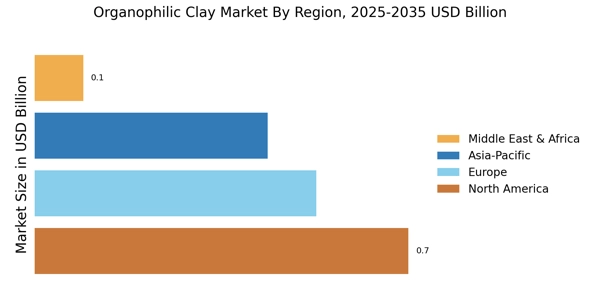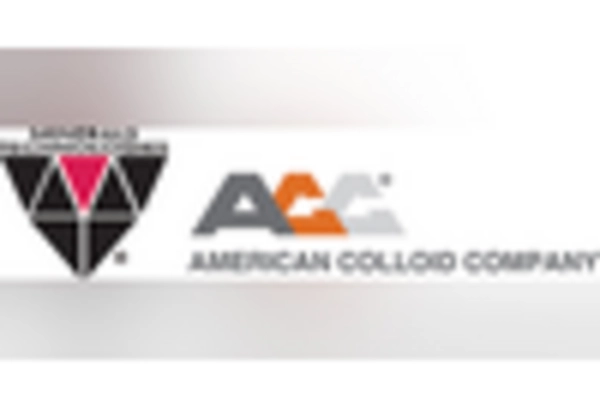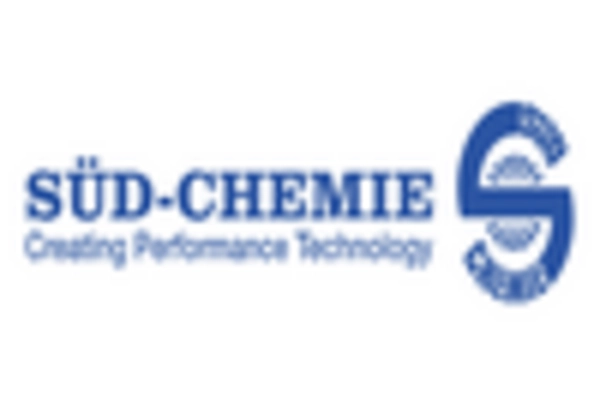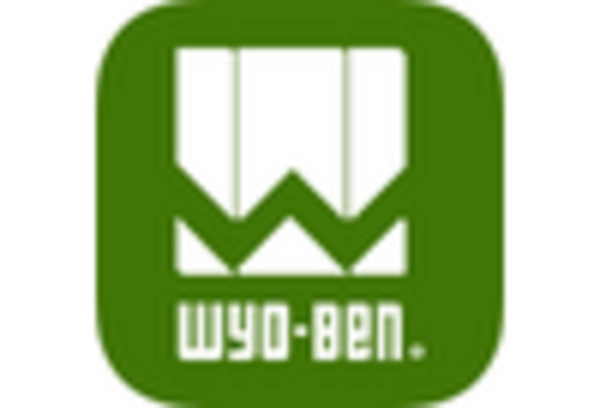Growth in Construction Activities
The Organophilic Clay Market is significantly influenced by the burgeoning construction sector. As urbanization accelerates, the demand for construction materials that offer superior performance characteristics is on the rise. Organophilic clays are increasingly being incorporated into various construction applications, including sealants, adhesives, and coatings, due to their excellent rheological properties. Market data suggests that the construction industry is projected to grow at a compound annual growth rate of around 4% over the next few years, which is likely to bolster the demand for organophilic clays. This growth reflects a broader trend towards the use of advanced materials that enhance the durability and sustainability of construction projects.
Increasing Environmental Regulations
The Organophilic Clay Market is also shaped by the evolving landscape of environmental regulations. Governments are implementing stricter guidelines regarding the use of chemicals in various industries, including oil and gas, construction, and manufacturing. Organophilic clays, known for their low toxicity and environmentally friendly properties, are becoming a preferred choice in applications where compliance with these regulations is paramount. The market is witnessing a shift towards sustainable practices, with organophilic clays being recognized for their ability to reduce environmental impact. This regulatory push is expected to drive the adoption of organophilic clays, as industries seek to align with environmental standards while maintaining operational efficiency.
Rising Demand in Oil and Gas Industry
The Organophilic Clay Market is experiencing a notable surge in demand, particularly from the oil and gas sector. This is primarily due to the increasing utilization of organophilic clays in drilling fluids, which enhance the performance and efficiency of drilling operations. As exploration activities expand, the need for effective drilling muds that can withstand high temperatures and pressures becomes critical. Reports indicate that the oil and gas industry accounts for a substantial share of the organophilic clay consumption, with projections suggesting a growth rate of approximately 5% annually. This trend underscores the importance of organophilic clays in optimizing drilling processes, thereby driving the market forward.
Technological Innovations in Material Science
The Organophilic Clay Market is benefiting from ongoing technological advancements in material science. Innovations in the formulation and processing of organophilic clays are enhancing their performance characteristics, making them more versatile for various applications. For instance, the development of new surface treatments and modifications is improving the compatibility of organophilic clays with different solvents and polymers. This trend is likely to expand the range of applications for organophilic clays, particularly in industries such as paints, coatings, and plastics. As manufacturers continue to invest in research and development, the market is expected to witness a rise in the adoption of these advanced materials, further propelling growth.
Expanding Applications in Personal Care Products
The Organophilic Clay Market is increasingly finding applications in the personal care sector. With a growing consumer preference for natural and safe ingredients, organophilic clays are being utilized in various personal care formulations, including cosmetics and skincare products. Their ability to enhance texture, stability, and performance makes them an attractive option for manufacturers. Market analysis indicates that the personal care industry is poised for growth, with an increasing number of brands incorporating organophilic clays into their products. This trend not only reflects changing consumer preferences but also highlights the versatility of organophilic clays in meeting the demands of diverse applications, thereby driving market expansion.


















Leave a Comment